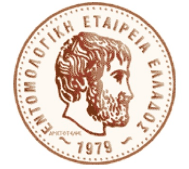Το πολυφάγο Αεπιδόπτερο Adoxophyes orana F.v.R. της οικογένειας Tortricidae παρατηρήθηκε για πρώτη φορά στην περιοχή της Νάουσας το 1985, σε μηλιές, ροδακινιές και κερασιές, όπου προσέβαλε την άνοιξη τους οφθαλμούς και αργότερα τα φύλλα και τους καρπούς. Πιθανότατα εισήλθε στην Ελλάδα από τη γειτονική Γιουγκοσλαβία, όπου ήταν γνωστό και προκαλούσε ζημιά στα οπωροφόρα δέντρα τουλάχιστον από το 1975. Το ενήλικο σε γενικό χρωματισμό και μορφή μοιάζει με το επίσης πολυφάγο φυλλοδετικό Λεπιδόπτερο.4Γί7φί rosanus L. Το άνοιγμα των πτερύγων στο ενήλικο αρσενικό είναι 15-20 mm και το θηλυκό 19-22 mm. Οι πρόσθιες πτέρυγες στο αρσενικό έχουν βασικό χρώμα κίτρινο ώχρας και στο θηλυκό σκοτεινότερο, συχνά καστανόμαυρο. Οι πτέρυγες αυτές και στα δύο φύλλα, έχουν χαρακτηριστικές κηλίδες και λωρίδες σκοτεινότερες από το βασικό χρώμα. Η πλήρως αναπτυγμένη προνύμφη είναι πράσινη και μήκους 18-20 mm.
(EL)
In spring 1985, buds of apple and peach trees in the Naoussa area of northern Greece were severely damaged by larvae of a tortricid moth. Adults emerged in late May and early June. Later in the season, we found larvae of the same species established and feeding on leaves and green or ripe fruits of apple and peach, as well as on ripe cherries. Larvae collected in late June were reared in the laboratory on peach leaves and on an artificial diet. The adults obtained were identified as Adoxophyes orana Fischer von Rosslerstamm (Lepidoptera. Tortricidae). A. orana is a synonym of A. reticulates Huebner, A.tripsiana Eversmann, A. fasciata Walsh., or Capua or Cacoecia reticulana Huebner and most probably, is a recent introduction to Greece. The damage it causes to fruits such as apples, peaches and cherries is such that it could not have escaped the attention of fruit growers and plant protection specialists if the insect had earlier been present in the country. A. orana has been established and caused damage to fruit trees in northwest and central Europe for approximately fifty years and in southern Yugoslavia for at least the last ten years. It is probable that it spread to northern Greece from neighboring Yugoslavia. In the Naoussa area, the moths laid their eggs in batches on fruits or leaves. On peach and cherry the eggs were laid on both sides of the leaves, whereas on apple on the upper side as was observed also in other countries. In early October, the larvae abandoned their feeding sites and went next to auxiliary buds and crevices of the bark of branches to spin their hibernating webs. The adult maleof A. orana has a wingspan of 15-20 mm and the female one of 19-22 mm. The fore wings of the male are yellow ochre reddish, and have distinct rusty-red designs. There is a basal darker (brown) area, and two large darker stripes. The median one departs from the basal third of the costa and terminates, widening or divided in two branches, at the tornus. The other stripe is preapical and may take the form of a triangular spot of which sometimes only the borders are visible. The fore wings of the female are normally darker than those of the male, often blackish-brown, and have darker and dimmer stripes and other markings. The hind wings are light grey in the male and grey-brown in the female. The ground colour in the specimens of northwestern Europe is varying from light brown to dark brown. The fully grown larva is 18-20 mm long, green, with a light brown head. It somewhat resembles the larva of another tortricid, Archipsrosanus L. which is a monovoltine polyphagous species common in Greek orchards in spring. A. orana is polyvoltine and feeds on buds, leaves and fruits of a great number of cultivated and wild plants. Among its reported many hosts are species of Betula, Crataegus, Cydonia, Gossypium, Ligustrum, Lonicera, Malus, Medicago, Pyrus, Populus, Pistacia, Parrotia, Proms,Quercus, Ribes, Rubus, Rosa, Salix, Solanum, Syringa, Tilia, Ulmus, Vaccinium and the grapevine Vitis vinifera.
(EN)

